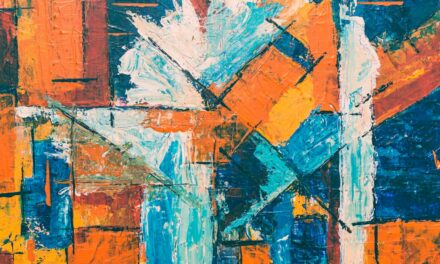Paper mâché, a time-honoured craft that has captivated artists and hobbyists alike, offers a unique blend of creativity and tactile engagement. This versatile medium, which translates to “chewed paper” in French, allows for the transformation of simple materials into stunning three-dimensional forms. From whimsical sculptures to intricate masks, the possibilities are boundless.
The beauty of paper mâché lies not only in its accessibility but also in its capacity for complexity, enabling artists to explore their imaginations while honing their skills. As one delves into the world of paper mâché, it becomes evident that mastery of this craft requires both patience and practice. The process involves layering strips of paper soaked in adhesive, which, when dried, create a sturdy structure.
While the basic technique is relatively straightforward, achieving intricate designs and robust builds demands a deeper understanding of materials, methods, and artistic vision. This article aims to guide aspiring artists through the various stages of creating complex paper mâché works, from selecting the right materials to displaying the final masterpiece.
Summary
- Paper mâché is a versatile and affordable medium for creating intricate and detailed structures.
- When choosing materials for complex builds, consider the strength and flexibility of the paper and the adhesive properties of the paste.
- Techniques such as layering, sculpting, and moulding are essential for creating intricate paper mâché structures.
- Adding detail and texture can be achieved through techniques like crumpling, scoring, and adding additional materials like fabric or wire.
- Finishing touches such as painting, varnishing, and sealing are crucial for preserving and enhancing the appearance of your paper mâché creation.
Choosing the Right Materials for Complex Builds
The foundation of any successful paper mâché project lies in the selection of appropriate materials. While traditional recipes often call for newspaper and a simple flour-and-water paste, artists seeking to create more complex structures may benefit from exploring a wider array of options. For instance, using heavier paper types such as cardboard or brown kraft paper can provide additional strength and stability to larger builds.
These materials can withstand the rigours of layering and manipulation, making them ideal for ambitious projects. In addition to paper types, the choice of adhesive is crucial. While flour paste is a popular choice due to its ease of preparation and non-toxicity, other adhesives such as PVA glue or wallpaper paste can offer enhanced durability and quicker drying times.
Artists should also consider incorporating additional elements such as wire or armatures for larger sculptures, which can provide essential support and allow for more intricate designs. By thoughtfully selecting materials that align with the intended complexity of the build, artists can set themselves up for success in their paper mâché endeavours.
Techniques for Creating Intricate Paper Mâché Structures
Once the materials are chosen, the next step involves mastering various techniques that will elevate the complexity of your paper mâché creations. One effective method is the use of moulds or forms to shape the paper into desired contours. This can be achieved by using balloons, plastic containers, or even custom-made wooden forms.
By applying layers of paper mâché over these moulds, artists can create smooth surfaces and defined shapes that would be challenging to achieve freehand. Another technique worth exploring is the incorporation of mixed media elements into your paper mâché projects. This could involve embedding natural materials such as twigs or leaves within the layers or using fabric scraps to add colour and texture.
Additionally, artists can experiment with different layering techniques, such as crumpling or tearing the paper before application to create varied surface textures. By combining these methods, one can produce intricate designs that not only capture attention but also invite closer inspection.
Adding Detail and Texture to Your Paper Mâché Creations
The true artistry of paper mâché lies in the details that bring a piece to life. Once the basic structure is complete, artists can focus on enhancing their creations with texture and embellishments. One effective way to achieve this is through the use of additional materials such as tissue paper, fabric, or even found objects.
These elements can be layered onto the surface to create depth and interest, transforming a simple form into a visually captivating piece.
For instance, while the paper mâché is still wet, artists can use tools such as brushes or sponges to manipulate the surface, creating patterns or impressions that add character to the work.
Additionally, incorporating paint or coloured adhesives into the layers can yield stunning effects that enhance the overall aesthetic. By paying careful attention to these details, artists can elevate their paper mâché creations from mere craft projects to true works of art.
Finishing Touches: Painting, Varnishing, and Sealing
Once the structure is complete and detailed, it is time to consider the finishing touches that will protect and enhance your paper mâché masterpiece. Painting is often the most anticipated part of the process, as it allows artists to infuse their personality and vision into the work. Acrylic paints are a popular choice due to their vibrant colours and quick drying times.
Artists should consider applying a base coat before adding layers of colour to ensure an even finish and to help colours pop. After painting, sealing your creation is essential for longevity. A clear varnish or sealant can protect against moisture and wear while providing a polished look.
When selecting a sealant, it is important to choose one that is compatible with your paint type; for instance, water-based varnishes work well with acrylic paints. Applying multiple thin coats rather than one thick layer will yield a more professional finish and prevent drips or uneven surfaces. These final steps not only enhance the visual appeal but also ensure that your paper mâché creation stands the test of time.
Troubleshooting Common Issues with Paper Mâché Builds
Despite careful planning and execution, artists may encounter challenges during their paper mâché journey. One common issue is warping or cracking as the piece dries. This can occur if layers are applied too thickly or if the drying environment is too humid or hot.
To mitigate this problem, it is advisable to apply thinner layers and allow ample drying time between applications. Additionally, ensuring proper ventilation during drying can help maintain an even moisture level throughout the piece. Another frequent concern is achieving a smooth finish on complex shapes.
Uneven surfaces can detract from the overall appearance of a work. To address this issue, artists can sand down rough areas once fully dried or apply additional layers of paper mâché in specific spots to build up uneven areas. Patience is key; taking time to refine these details will ultimately lead to a more polished final product.
Displaying and Preserving Your Paper Mâché Masterpiece
Once your paper mâché creation is complete and beautifully finished, consideration must be given to how it will be displayed and preserved. The choice of display location is crucial; ideally, it should be a space where the artwork can be appreciated without risk of damage from moisture or direct sunlight. Using stands or shadow boxes can elevate your piece while protecting it from potential harm.
Regular dusting with a soft cloth will help maintain its appearance without causing scratches or damage to the surface. If your piece is intended for outdoor display, consider using weather-resistant sealants specifically designed for outdoor use.
By taking these steps, you can ensure that your paper mâché masterpiece remains a cherished part of your artistic journey for years to come.
Taking Your Paper Mâché Skills to the Next Level
In conclusion, mastering paper mâché is an enriching journey that combines creativity with technical skill. By carefully selecting materials, employing various techniques, and paying attention to detail, artists can create intricate and stunning works that reflect their unique vision. The process may present challenges along the way; however, with perseverance and practice, these obstacles can be transformed into opportunities for growth.
As you continue to explore this versatile medium, consider pushing your boundaries further by experimenting with new techniques or integrating other art forms into your projects. Whether you are creating for personal enjoyment or seeking to share your work with others, each piece you craft contributes to your artistic evolution. Embrace the journey of paper mâché mastery; it is not merely about creating art but about discovering your voice within it.
For those interested in exploring different art techniques, an article worth reading is An Introduction to the Art Technique: Rapid Visualization Graphic Artist Technique. This article delves into the fascinating world of rapid visualization and how it is used by graphic artists to bring their ideas to life. It provides insights into the process and the skills required to master this technique, making it a valuable read for aspiring artists looking to expand their creative horizons.


